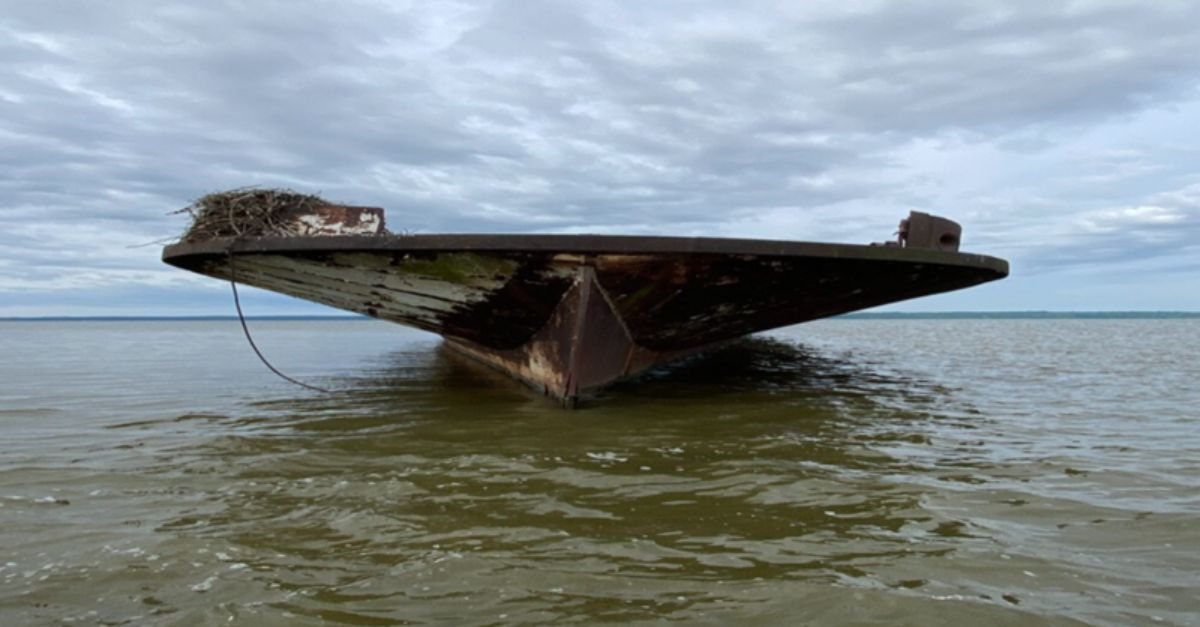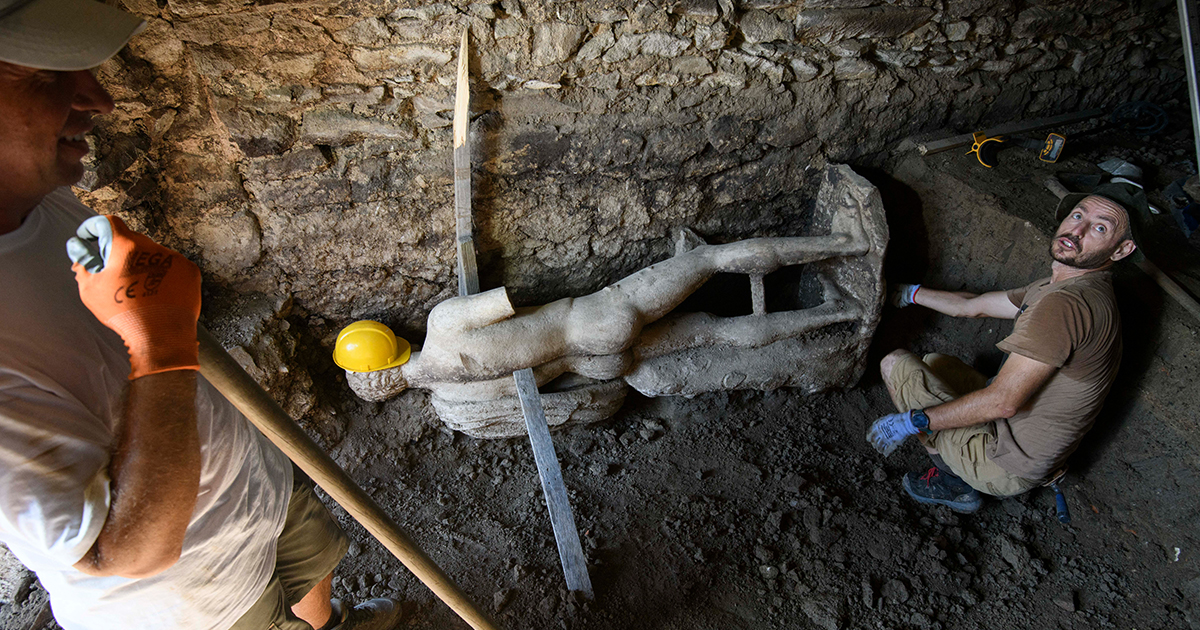Anchors Down Forever
Time catches up with every ship that sails, and some ship graveyards around the world welcome these retired giants. Each location has its own character and story. So, let's look through these remarkable ship sanctuaries.
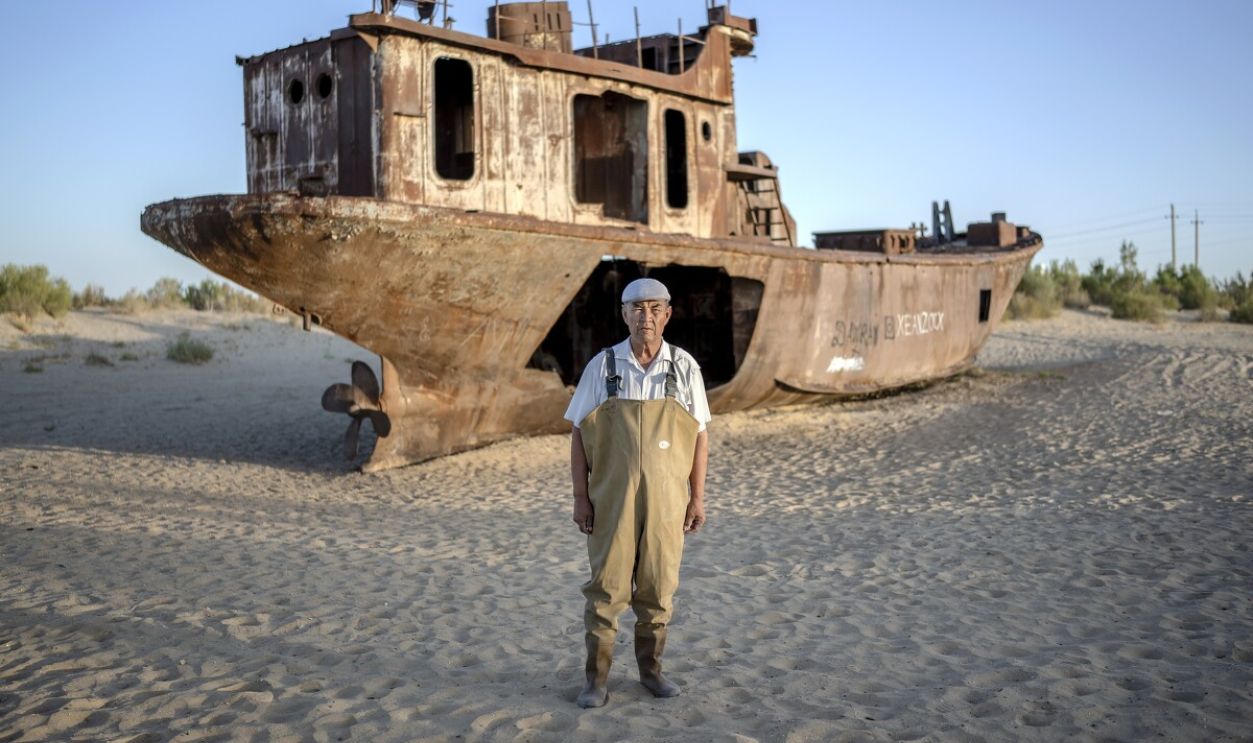
Nouadhibou Bay, Mauritania
Nouadhibou Bay, also known as Dakhlet Nouadhibou, is an important geographical feature located on the Atlantic coast of Mauritania. It is one of the largest natural ports in Africa and serves as a critical economic and commercial area for the country.
 Bertramz, CC BY-SA 3.0, Wikimedia Commons
Bertramz, CC BY-SA 3.0, Wikimedia Commons
Location
The bay is situated at coordinates 20°52′N 16°54′W, bordered by the Cap Blanc headland on its western side. It extends approximately 50 kilometers from north to south, with a width of about 32 kilometers at its widest point.
 Papagon, CC BY-SA 4.0, Wikimedia Commons
Papagon, CC BY-SA 4.0, Wikimedia Commons
Underwater Record
In Nouadhibou Bay, a notable shipwreck of a former Soviet trawler rests at a depth of 42 meters. This vessel, which sank in 1987, stands as a representation of the deepest wreck within the bay's extensive collection of abandoned ships.
Survey Data
Some marine surveys have documented around 200–300 distinct wrecks, showing vessels ranging from 12-meter fishing boats to 240-meter cargo ships. This collection proves the area's maritime history and economic activities, with ships from more than 30 maritime nations.
 Tinga more, CC BY-SA 3.0, Wikimedia Commons
Tinga more, CC BY-SA 3.0, Wikimedia Commons
Economic Corruption
During the 1980s, Nouadhibou's financial hardship led to government corruption. Officials accepted bribes from international ship owners seeking cheap disposal, turning the bay into a dumping ground for vessels from cargo ships to naval cruisers.
 Radosław Botev, CC BY 3.0, Wikimedia Commons
Radosław Botev, CC BY 3.0, Wikimedia Commons
Alang Ship Breaking Yard, India
Established in 1983 by Capt. N. Sundaresan, this place has become a critical hub for dismantling retired freight and cargo ships from across the globe. At Alang, ships are said to be beached during high tide and dismantled as the tide recedes.
 Neilsatyam, CC BY-SA 4.0, Wikimedia Commons
Neilsatyam, CC BY-SA 4.0, Wikimedia Commons
Scale And Capacity
This facility in India extends across 6.5 kilometers of Gujarat's coastline, featuring 153 dedicated breaking plots. In 2023, the yard achieved its highest processing record of 516 end-of-life vessels, wherein over 40,000 workers were directly employed.
 Planet Labs, Inc., CC BY-SA 4.0, Wikimedia Commons
Planet Labs, Inc., CC BY-SA 4.0, Wikimedia Commons
Tidal Engineering
Alang's 10 to 12-meter tidal variance enables ships up to 80,000 deadweight tons to beach themselves naturally. This geographical advantage eliminates the need for expensive docking facilities and reduces operational costs compared to conventional yards.
 Bambhaniya Ravikumar, CC BY-SA 4.0, Wikimedia Commons
Bambhaniya Ravikumar, CC BY-SA 4.0, Wikimedia Commons
Resource Recovery
Reportedly, teams extract 4.5 million tons of reusable equipment annually, including engines, generators, and maritime furniture. The salvaged materials supply 400 local shops, which create a thriving secondary market worth $500 million in yearly revenue.
 anil c patel, CC BY-SA 3.0, Wikimedia Commons
anil c patel, CC BY-SA 3.0, Wikimedia Commons
Regional Economic Engine
So, this breaking yard's operations generate an annual revenue of around $1.8 billion, contributing greatly to Gujarat's GDP. Each vessel provides 200-400 days of work for local laborers. This supports an extensive ecosystem of regional industries.
 Ravi Bambhaniya, CC0, Wikimedia Commons
Ravi Bambhaniya, CC0, Wikimedia Commons
Gadani Ship Breaking Yard, Pakistan
Did you know? This yard processed its largest vessel in 2009, dismantling a 293-meter VLCC tanker weighing 62,000 tons. The designated teams completed the complex operation in around three months, setting industry benchmarks for large-scale dismantling.
 Naqiyah shabbir, CC BY-SA 4.0, Wikimedia Commons
Naqiyah shabbir, CC BY-SA 4.0, Wikimedia Commons
Historical Evolution
It has been reported that shipbreaking began sporadically in Gadani before Pakistan's independence and expanded largely during the 1960s. In 1978, the government officially designated Gadani as a port, and it grew to become the world's largest yard.
Infrastructure Design
At Gadani Ship Breaking Yard, each plot is precisely 2,500 square meters, designed to facilitate the efficient dismantling of large vessels. It is also equipped with sophisticated manual winches capable of lifting portions of ships weighing up to 300 tons.
 khadim-un-nabi Rao, CC BY-SA 3.0, Wikimedia Commons
khadim-un-nabi Rao, CC BY-SA 3.0, Wikimedia Commons
1983 Achievement
During its peak operations in 1983, Gadani Ship Breaking Yard achieved a significant milestone by processing 1.65 million tons of steel. This record-breaking year showcased the yard's operational capabilities and solidified its reputation as a leading ship recycling center globally.
 Asianet-Pakistan, Shutterstock
Asianet-Pakistan, Shutterstock
Operational Efficiency
Despite ranking third in volume globally, Gadani leads in efficiency. Workers dismantle 5,000 LDT vessels within 30-45 days, while yards in India and Bangladesh require over six months for similar ships, displaying superior operational capabilities.
Specialized Focus
The yard plays an important part in Pakistan's ship recycling industry, processing around 850,000 tons of vessels annually. This output accounts for 60% of the country's yearly ship-recycling tonnage due to its proficiency in dismantling oil tankers.
Chittagong Ship Breaking Yard, Bangladesh
The origins of shipbreaking in Chittagong, Bangladesh, date back to the 1960s when a Greek ship, the M D Alpine, became stranded on the Sitakunda coast after a cyclone. This event is seen as the ultimate beginning of the ship recycling industry in the country.
 KennyOMG, CC BY-SA 4.0, Wikimedia Commons
KennyOMG, CC BY-SA 4.0, Wikimedia Commons
Corporate Withdrawal
In 2014, shipping company Hapag-Lloyd followed an earlier decision by Maersk to cease using the yard for dismantling its old ships. This decision was mainly due to the yard's poor safety standards despite the higher costs associated with alternative facilities.
 Henry M. Trotter, Wikimedia Commons
Henry M. Trotter, Wikimedia Commons
Global Contribution
It handles a substantial portion of the world's ship recycling and is estimated to account for approximately 20% of global ship recycling tonnage. This figure can fluctuate yearly based on market conditions and the volume of ships being scrapped.
 Naquib Hossain, CC BY-SA 2.0, Wikimedia Commons
Naquib Hossain, CC BY-SA 2.0, Wikimedia Commons
Economic Impact
The yard is responsible for nearly 50% of the steel produced in Bangladesh. It contributes to Bangladesh's economy by providing essential materials for local industries, particularly steel for construction. Also, the recycled materials are exported, which supports international markets.
 Xalan mustafa, CC BY-SA 3.0, Wikimedia Commons
Xalan mustafa, CC BY-SA 3.0, Wikimedia Commons
Technical Process
Workers employ a specialized top-down dismantling technique that begins with the removal of components from the upper sections of the ship, starting with the ship bridges and working downward in 15-ton sections. This methodical approach enhances material recovery and worker safety.
 International Maritime Organization, CC BY 2.0, Wikimedia Commons
International Maritime Organization, CC BY 2.0, Wikimedia Commons
Mallows Bay, United States
Mallows Bay is a small bay located on the Maryland bank of the Potomac River in Charles County, Maryland. It is known for housing what is considered the most massive shipwreck fleet in the Western Hemisphere, often referred to as a "ship graveyard”.
 Matt McIntosh,National Oceanic and Atmospheric Administration, Wikimedia Commons
Matt McIntosh,National Oceanic and Atmospheric Administration, Wikimedia Commons
Ghost Fleet Composition
The site contains 88 identical wooden steamships that were built in 1918, each measuring 267 feet long. These vessels were part of a wartime shipbuilding program initiated by the U.S. during WWI. They were constructed to address the urgent need for merchant ships.
 Will Sassorossi, w:National Oceanic and Atmospheric Administration, Wikimedia Commons
Will Sassorossi, w:National Oceanic and Atmospheric Administration, Wikimedia Commons
Historical Investment
Although nearly 300 ships were built during this period, many became obsolete after the battle ended before they could be deployed. The total construction costs for the fleet amounted to something close to $298 million in today's currency.
 Will Sassorossi, w:National Oceanic and Atmospheric Administration, Wikimedia Commons
Will Sassorossi, w:National Oceanic and Atmospheric Administration, Wikimedia Commons
Ecological Development
The site spans approximately 14 square kilometers and supports a rich biodiversity, inclusive of around 100 bird species and 27 native fish varieties. This transformed military disposal area has become an ecosystem within the Chesapeake Bay watershed.
 Matt McIntosh, w:National Oceanic and Atmospheric Administration, Wikimedia Commons
Matt McIntosh, w:National Oceanic and Atmospheric Administration, Wikimedia Commons
Archaeological Preservation
The mud layers at the bottom of the bay form an oxygen-free environment that preserves about 31,000 cubic meters of ship timber from the many wrecks. This condition helps protect historical materials, as it creates an underwater time capsule of maritime technology.
 Matt McIntosh, w:National Oceanic and Atmospheric Administration, Wikimedia Commons
Matt McIntosh, w:National Oceanic and Atmospheric Administration, Wikimedia Commons
Landevennec Ship Graveyard, France
This is a famous marine location in Brittany, France. It is placed next to the roadstead of Brest at the last bend of the Aulne River, close to its mouth. It is a resting place for decommissioned naval vessels and has historical value dating back to the 19th century.
 Murzabov, CC BY-SA 3.0, Wikimedia Commons
Murzabov, CC BY-SA 3.0, Wikimedia Commons
Storage Innovation
It employs a strategic layout that includes an approximate 10-meter-deep basin where freshwater overlays saltwater. This distinct configuration highly enhances the preservation of the vessels stored in the graveyard by reducing hull corrosion by some amounts.
 Oserge, CC BY-SA 3.0, Wikimedia Commons
Oserge, CC BY-SA 3.0, Wikimedia Commons
Military Presence
There are eight decommissioned submarines present in the northern section here, including the Agosta-class one that racked up 176,000 nautical miles. These boats are just sitting around, waiting for some specialized nuclear decontamination work to be done.
Environmental Protection
It also employs advanced double-hull containment systems to effectively manage the environmental impact of decommissioned vessels. These engineering solutions are designed to prevent potential contaminant leakage so that water quality is maintained while vessels are stored for extended periods.
 Sardon, CC BY-SA 2.5, Wikimedia Commons
Sardon, CC BY-SA 2.5, Wikimedia Commons
Monitoring System
Besides, quarterly ultrasonic hull thickness testing also ensures vessel integrity. Basically, ships that show more than 15% degradation in hull thickness are mandated to undergo scrapping. This strict protocol is part of broader environmental protection measures.
 Berrucomons, CC BY-SA 3.0, Wikimedia Commons
Berrucomons, CC BY-SA 3.0, Wikimedia Commons
Aral Sea Ships' Graveyard, Uzbekistan
The Aral Sea Ship Graveyard in Uzbekistan tells a sad tale about one of the biggest environmental disasters ever. Muynak used to be a bustling fishing port, but now it’s about 150 kilometers away from the water, surrounded by desert and old, rusty ships.
 THORSTEN, CC BY-SA 4.0, Wikimedia Commons
THORSTEN, CC BY-SA 4.0, Wikimedia Commons
Environmental Crisis
Reportedly, the Aral Sea experienced a dramatic ecological disaster due to massive water diversion projects between 1960 and 1990, which led to a reduction in its size. The sea shrank by approximately 90 kilometers, resulting in the loss of 91% of its volume.
 upyernoz from Haverford, USA, CC BY 2.0, Wikimedia Commons
upyernoz from Haverford, USA, CC BY 2.0, Wikimedia Commons
Notable Vessel
The Mikhail Hrushchev, a cargo ship weighing 1,300 tons, serves as a stark monument to the environmental mismanagement associated with the Aral Sea disaster. Currently, it rests 12 kilometers from the nearest water, as an illustration of the dramatic changes that have occurred.
 The Arian Zwegers, CC BY 2.0, Wikimedia Commons
The Arian Zwegers, CC BY 2.0, Wikimedia Commons
Mikhail Hrushchev
The ship was named after Nikita Khrushchev, the former leader of the Soviet Union, who was instrumental in the agricultural policies that led to the diversion of rivers draining into the Aral Sea. These policies aimed to increase cotton production but resulted in ecological consequences.
 Unknown Author, CC BY-SA 3.0, Wikimedia Commons
Unknown Author, CC BY-SA 3.0, Wikimedia Commons
Natural Preservation
So, this area is characterized by annual sand accumulation that goes beyond 2 meters. This different burial process was critical in preserving the lower hulls of the stranded vessels while the upper structures deteriorated due to exposure to the elements.
Staten Island Boat Graveyard, United States
Founded by John J. Witte in the 1930s, the boat graveyard was initially a salvage yard for decommissioned vessels. At its peak, as many as 400 ships, including cargo boats and tugboats, were present here. Current estimates range from 25 to 40 decaying ships at the site.
 National Archives at College Park, Wikimedia Commons
National Archives at College Park, Wikimedia Commons
Naval Heritage
The USS PC-1264, a 148-foot World War II submarine chaser, stands out as the largest intact wreck in the collection. Abandoned in 1976, this vessel is historically rich, as it was the first U.S. Navy ship during the conflict to have an African-American crew.
 Z22, CC BY-SA 4.0, Wikimedia Commons
Z22, CC BY-SA 4.0, Wikimedia Commons
Abram S. Hewitt
Another one is the fireboat Abram S. Hewitt, which was critical during the General Slocum disaster on June 15, 1904. As the fire raged, Captain William Schaick attempted to beach the vessel on North Brother Island, but many passengers were forced to jump into the water.
 Unknown Author, Wikimedia Commons
Unknown Author, Wikimedia Commons
Accessibility
Access to the Staten Island Boat Graveyard is restricted as it is located on private land and marked with "No trespassing" signs. Despite this, marine historians and adventurers sometimes explore the area by boat or kayak to photograph the eerie remnants of these vessels.
 Little Vignettes Photo, Shutterstock
Little Vignettes Photo, Shutterstock
Truk Lagoon, Micronesia
Widely known as the "Gibraltar of the Pacific," Truk Lagoon is situated in the Federated States of Micronesia. Following WWI, Japan gained control over Micronesia, including Truk Lagoon, under a League of Nations mandate. By early 1944, Truk Lagoon saw a fleet of over 1,000 ships.
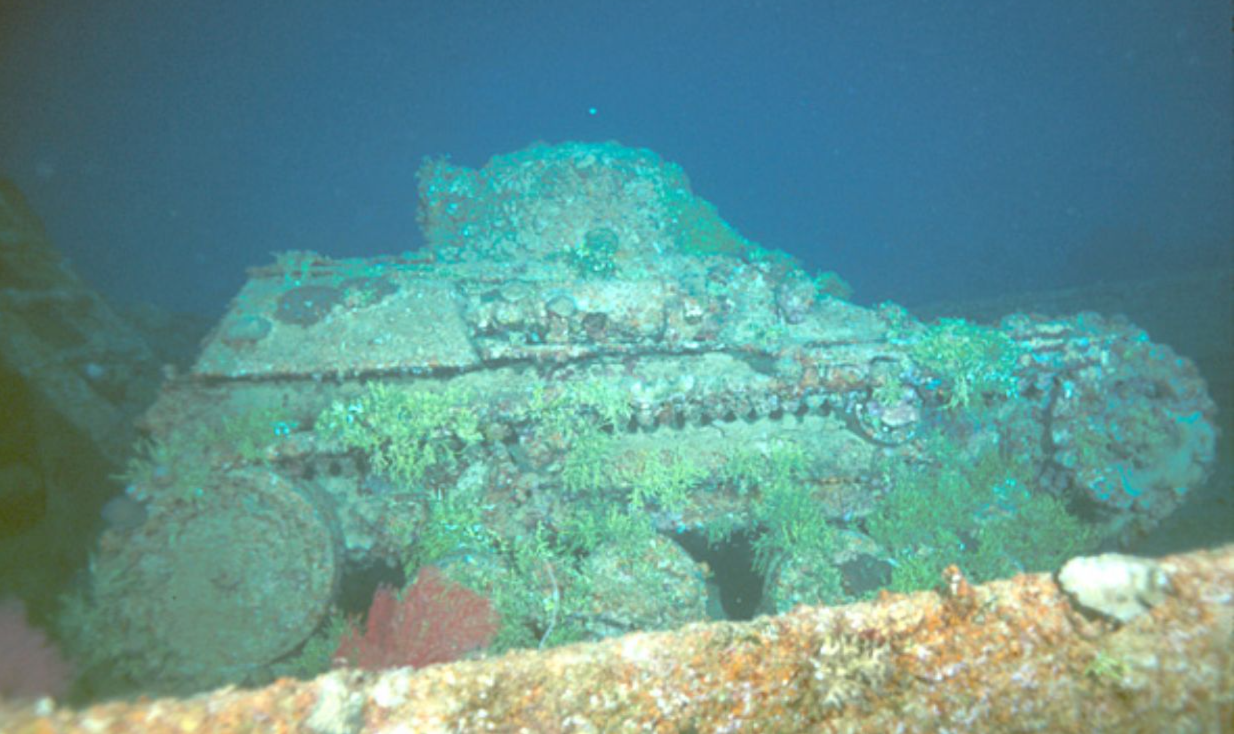 Aquaimages, CC BY-SA 2.5, Wikimedia Commons
Aquaimages, CC BY-SA 2.5, Wikimedia Commons
Deep Wreck
The Fujikawa Maru, a Japanese refrigerated cargo ship, rests here at a depth of approximately 35–40 meters. This wreck, which was sunk during Operation Hailstone in February 1944, is notable for still containing around 16,000 gallons of fuel.
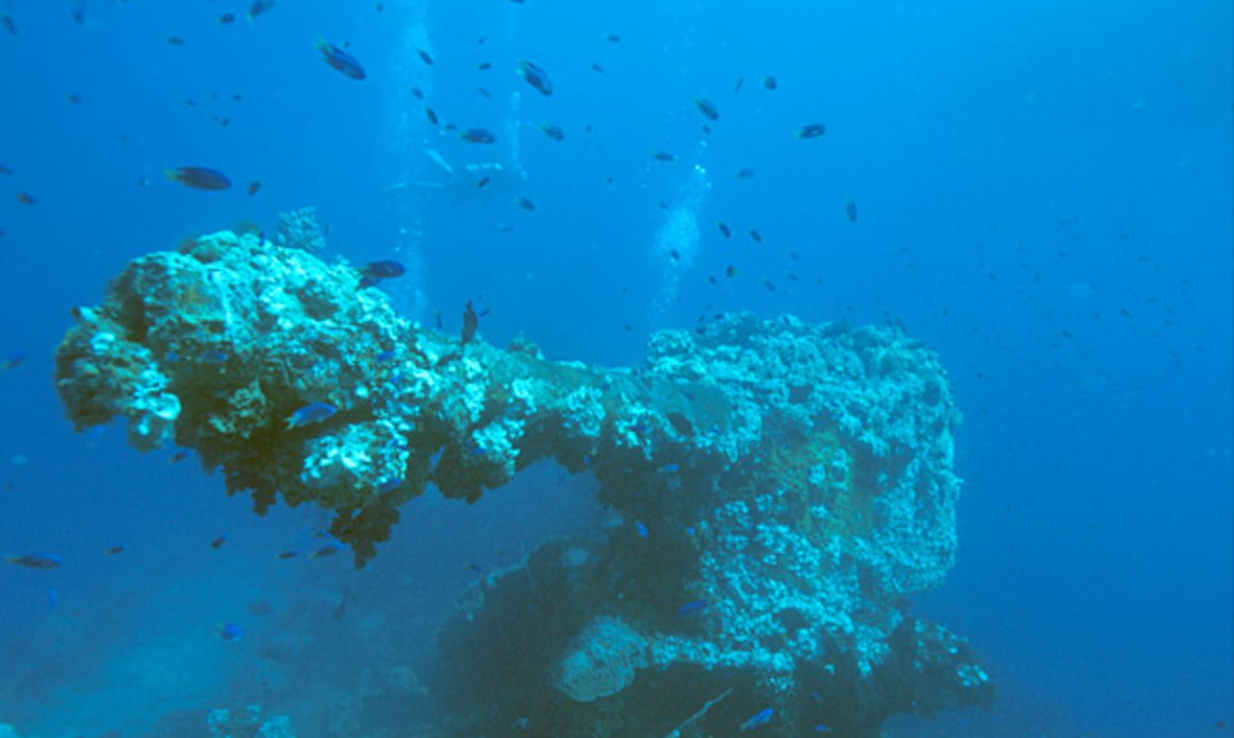 Aquaimages, CC BY-SA 2.5, Wikimedia Commons
Aquaimages, CC BY-SA 2.5, Wikimedia Commons
Geographical Features
The lagoon is part of the Caroline Islands and features a protective reef that encloses a natural harbor that is about 79 by 50 kilometers, with a total area of 2,130 square kilometers. The lagoon has a mix of high volcanic islands and low coral islands.
 W.wolnyderivative work: bamse, CC BY-SA 3.0, Wikimedia Commons
W.wolnyderivative work: bamse, CC BY-SA 3.0, Wikimedia Commons
Environmental Monitoring
The annual temperature variations of close to 2.7°C in Truk Lagoon majorly influence coral growth and contribute to the formation of datable layers in coral structures. Coral growth on the ships has increased their dimensions by an average of 0.6 meters.
 Aquaimages, CC BY-SA 2.5, Wikimedia Commons
Aquaimages, CC BY-SA 2.5, Wikimedia Commons

